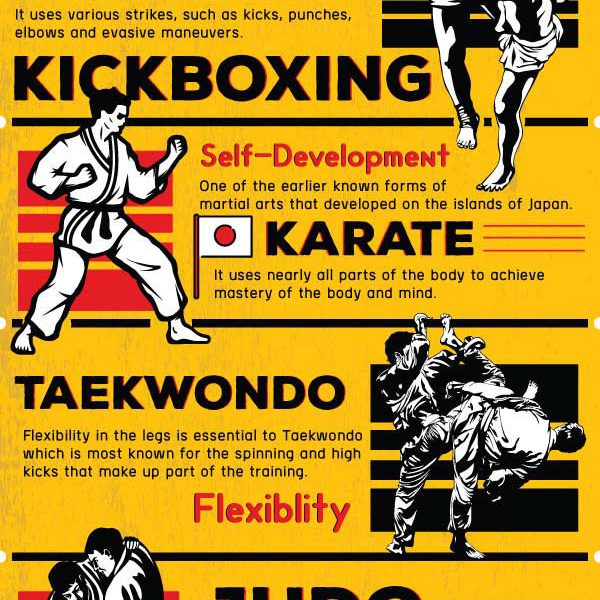Discover The Tricks Behind Karate, Taekwondo, And Much More! Unveil The Covert Globe Of Martial Arts Designs In This Supreme Guide
Discover The Tricks Behind Karate, Taekwondo, And Much More! Unveil The Covert Globe Of Martial Arts Designs In This Supreme Guide
Blog Article
Write- martial arts without kicks -Borch Russo
Are you tired of sensation overwhelmed by the large world of fighting styles? With so many designs to select from, it can be easy to obtain shed in a sea of strikes, kicks, and mystical names. But anxiety not!
This discussion will certainly debunk the various fighting styles styles, taking you on a trip from the powerful strikes of Karate to the dynamic kicks of Taekwondo. Get ready to discover the origins, techniques, and viewpoints behind these ancient art kinds.
So, tighten your belt and prepare to start an enlightening exploration right into the exciting world of martial arts.
Origins of Martial Arts Styles
The beginnings of martial arts styles can be mapped back to old worlds and their demand for self-defense and combat techniques. Throughout background, different societies created their very own distinct techniques of fighting, each with its own collection of techniques and ideologies.
In China, for instance, martial arts styles such as Kung Fu and Tai Chi were created as a means of protection and improving physical and mental health.
In Japan, the samurai warriors developed designs like Karate and Judo, concentrating on technique, accuracy, and mastery of the body.
Similarly, in Korea, Taekwondo became a fighting style highlighting high kicks, fast motions, and mental fortitude.
These early people laid the foundation for the diverse variety of martial arts styles that exist today, each with its own rich background and cultural relevance.
Strategies and Educating Approaches
To master fighting styles designs, experts have to find out numerous strategies and training approaches.
Techniques are the details activities and actions used in fight, such as punches, kicks, tosses, and blocks. Different fighting styles designs have their own special collection of techniques that specialists must grasp through extensive training.
Training methods differ relying on the design, however they typically include a mix of physical fitness, drills, competing, and kinds.
Physical fitness is crucial to develop stamina, flexibility, and endurance. Drills aid experts refine their strategies and boost their speed and accuracy.
Sparring allows specialists to practice their strategies in a regulated, realistic setting. Types, likewise known as kata, are prearranged sequences of movements that assist specialists establish muscle mass memory and emphasis.
Approaches and Principles
Checking out the ideologies and concepts of fighting styles designs can provide you with a deeper understanding of your selected self-control. Each fighting style has its very own distinct viewpoint and collection of assisting concepts that shape the method it's exercised.
For https://franciscokhbvp.liberty-blog.com/32572446/benefits-of-fighting-style-for-young-people-establishing-self-assurance-and-self-discipline , Karate emphasizes technique, regard, and self-discipline. It instructs specialists to focus their minds and bodies, allowing them to defend themselves while preserving a feeling of internal tranquility.
On the other hand, Taekwondo places a strong emphasis on rate, dexterity, and flexibility. https://stpetecatalyst.com/places-this-week-snell-isle-estate-martial-arts-school-building-sell/ are rooted in the tenets of politeness, honesty, determination, self-discipline, and indomitable spirit.
Final thought
Now that you've explored the origins, strategies, and approaches of different fighting styles designs, you have a much deeper understanding of these old self-controls.
Visualize a young karate student, exercising with unwavering decision and focus, breaking through boards with a powerful strike.
Their trip showcases the devotion and strength needed to grasp a martial art, advising us that with discipline and perseverance, anything is possible.
